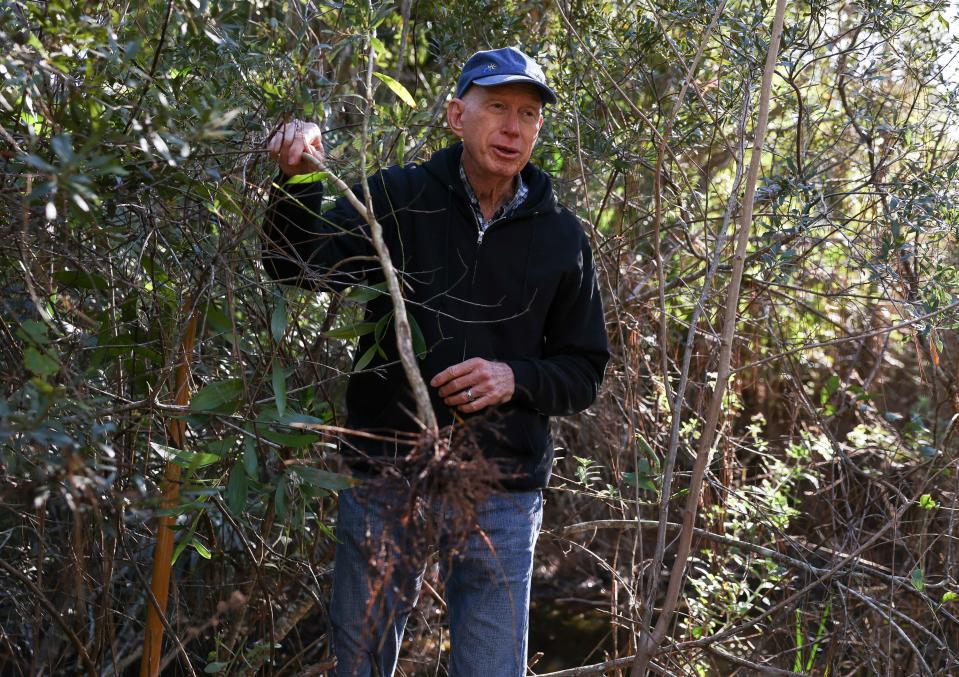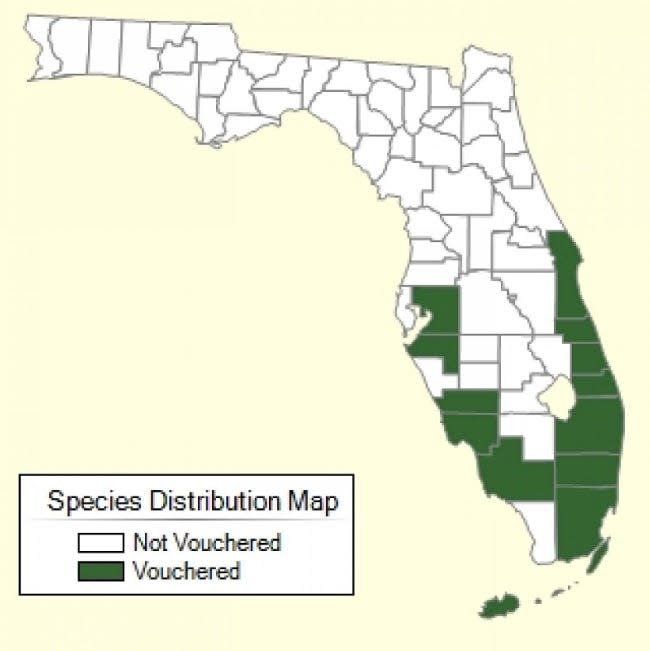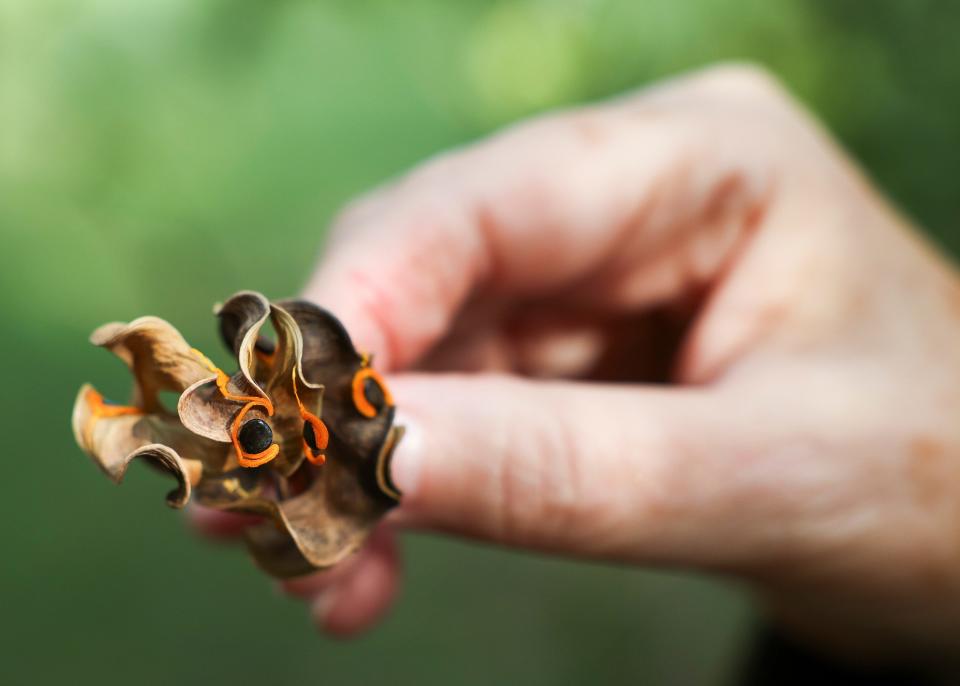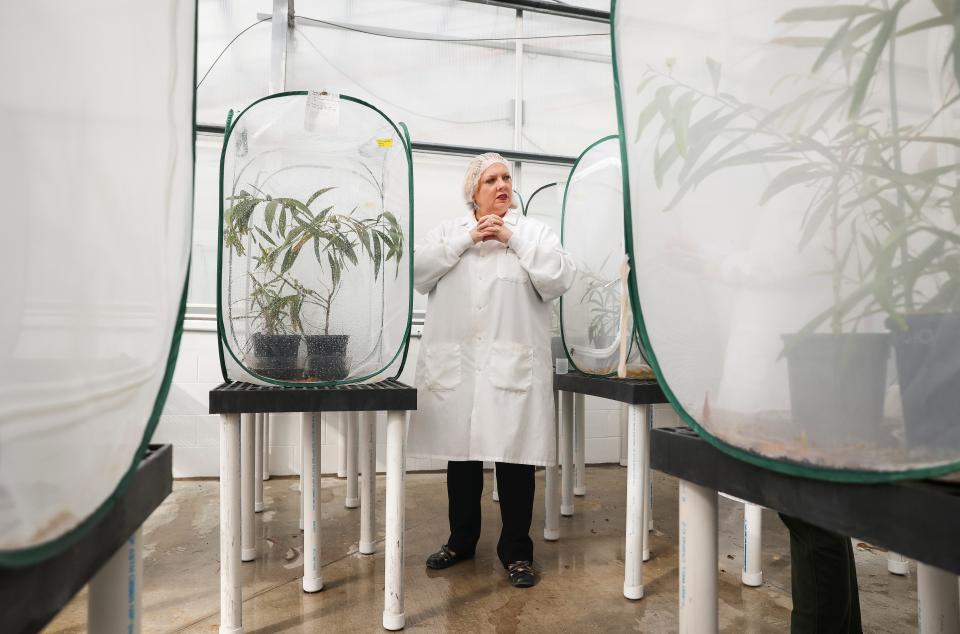Invasive earleaf acacia tree spreading throughout Florida, threatens Everglades
Shovel in hand, Dan Boarman scouts Sunnier Palms for invasive species encroaching on the 30-acre park and campground in western St. Lucie County. Once he eyes an earleaf acacia, the former forester kills the tree by stripping the trunk's base to expose the tissues that transport nutrients.
Boarman has "girdled" and felled dozens of the trees in the Fort Pierce nudist community where he lives. But dozens remain in the forest bordering the RVs and mobile homes on Okeechobee Road, blocking out such native plants as saw palmetto, bachelor's buttons and wild pennyroyal.

They are fast becoming the next Australian pine and Brazilian pepper — two runaway invasives that have invaded pinelands, cypress groves and the Everglades. Since being introduced into Florida as an ornamental tree in 1932, earleaf acacias have spread from Monroe County to Kissimmee.
But University of Florida and U.S. Department of Agriculture scientists are seizing the early-warning opportunity to combat the trees before it's too late. They plan to release two insects to damage the trees, and they're asking residents to chop down the trees, but minimize herbicides that can damage wetlands.
UF entomologist Carey Minteer, who has found whole forests of them in Port St. Lucie, has received about 20 calls from homeowners concerned about the trees encroaching on their property.
"You're going to be battling seedlings in your yard, for sure," she said. "It's just better for the environment and the economy if you would cut it down and choose something that's either native or is not considered to be problematic in the state."
Earleaf acacia: Invasive species threatens native habitat

The trees are native to Oceania — Australia, Indonesia and Papua New Guinea — and thrive where the water table is high, so they have been found primarily in Florida's southern coastal counties.
Each tree carries up to 47,000 seeds, which curl from orange strings in earlike pods, and disperse through canals, creeks, rivers and aggressively encroach on sensitive ecosystems, Minteer said. They drown the understory, blocking vegetation for small fish and space for wading birds to take flight.
"They crowd out and outcompete native plant species," Minteer said. "When you have fewer native plant species, you have less food and habitat for native wildlife."
Scientists hope to combat the trees by releasing an Australian beetle that feeds exclusively on the leaves, and gall wasps that embed in the trees and weaken them.
When the wasps deposit their eggs in the flower and leaf buds, the trees form a tumor-like wall around the eggs to contain them, called a gall. The wasps eat the plant tissue and drill a hole out to emerge and lay eggs again.
"Their whole goal is to grow in the gall. They're moochers," Minteer said. "(The gall) acts as a nutrient sink for the tree, so it can reduce growth and reproduction."
UF studies acacias, beetles, wasps in Fort Pierce
After the trees began spreading rapidly in 2015, UF's Institute of Food and Agricultural Sciences planted 50 trees to study at the Indian River Research Center in western Fort Pierce. In three years, they've grown to 20 feet tall, and can max out at 50 feet tall, Minteer said.

Scientists also traveled to Australia to collect the beetle, one of 89 insects known to feed on the trees. Scientists have been testing what temperatures, humidity and other environmental conditions the beetles and wasps can tolerate.
So far, it looks like they'll survive in Florida, where they'll find an all-you-can-eat buffet of earleaf acacias, Minteer said. The insects aren't expected to eradicate the trees, just stunt their growth and slow their spread.
"The bugs are never going to eat every single bit of it," Minteer said. "We're always going to have earleaf acacia, but we want there to be less."
Will there be unintended consequences?
There can be unintended consequences from releasing nonnative species, including them developing a taste for Florida native plants.
To ensure the beetles won't harm other plants, including native and agricultural crop plants, scientists have tested them with 125 closely related legume species and economically vital species from across North America, including soybeans and citrus.

To prevent the beetles from escaping the lab, scientists have quarantined them. The lab has filtered ventilation and incinerator toilets, and scientists wear hair nets and lab coats as they enter the negative-pressure room.
Minteer said the beetle will be well-tested and reviewed for release. UF/IFAS this year plans to apply for a U.S. Department of Agriculture permit to release the beetle. Minteer expects permit approval in 2-3 years.
It wouldn't be their first time either. Sunnier Palms has released other types of beetles that UF/IFAS bred to combat other invasives, such as Old World climbing fern, founder Tonianne Wyner said.
“We've been doing biological control in this country for over 100 years,” Minteer said. “If it's not going to have an actual impact, we're not going to take the risk to release it."
Katie Delk is an environmental reporter for TCPalm. Contact her at katie.delk@tcpalm.com or 772-408-5301. Check for updates at @katie_delk.
This article originally appeared on Treasure Coast Newspapers: Earleaf acacia trees are invasive species spreading throughout Florida

